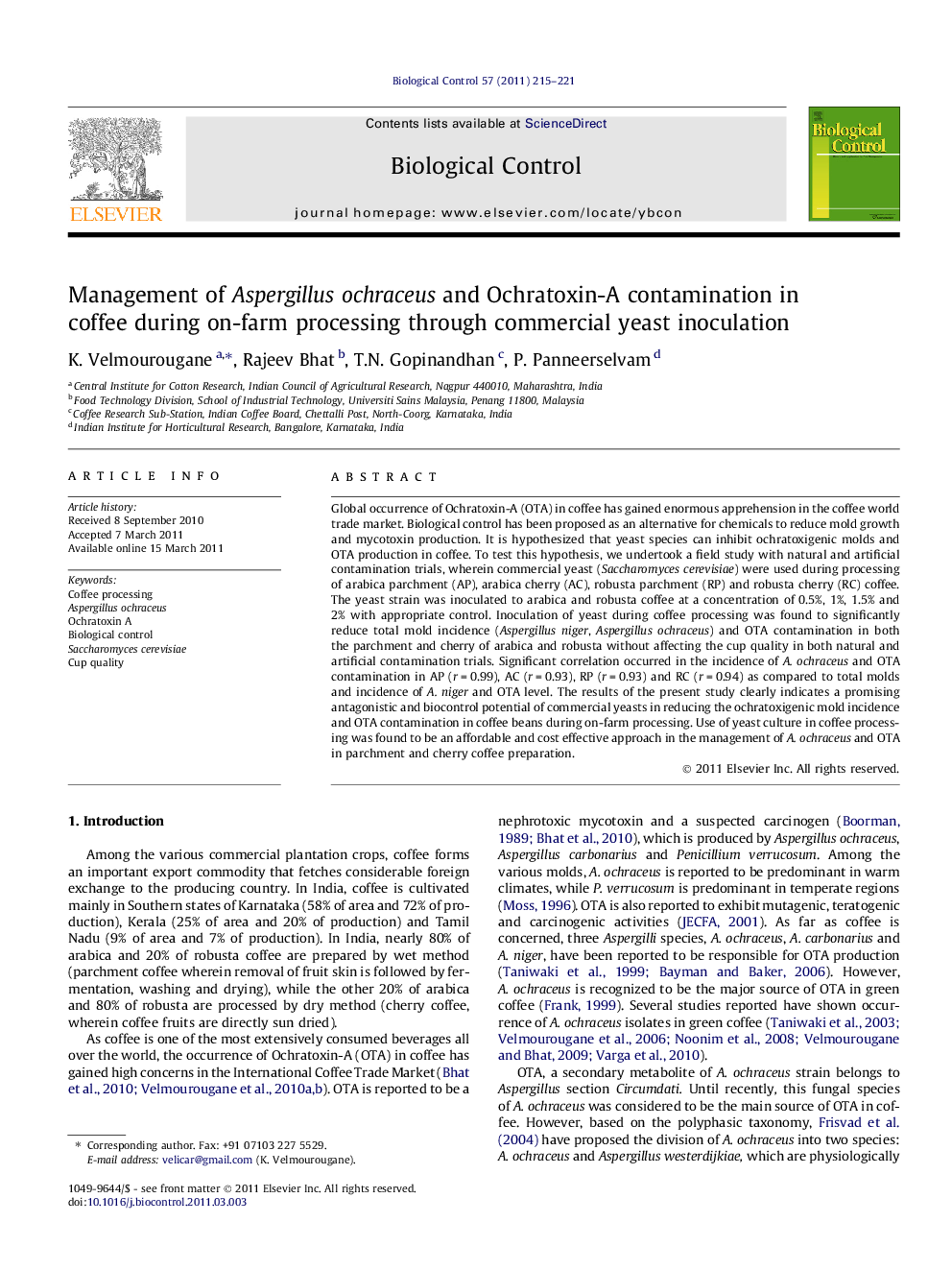| Article ID | Journal | Published Year | Pages | File Type |
|---|---|---|---|---|
| 4504237 | Biological Control | 2011 | 7 Pages |
Global occurrence of Ochratoxin-A (OTA) in coffee has gained enormous apprehension in the coffee world trade market. Biological control has been proposed as an alternative for chemicals to reduce mold growth and mycotoxin production. It is hypothesized that yeast species can inhibit ochratoxigenic molds and OTA production in coffee. To test this hypothesis, we undertook a field study with natural and artificial contamination trials, wherein commercial yeast (Saccharomyces cerevisiae) were used during processing of arabica parchment (AP), arabica cherry (AC), robusta parchment (RP) and robusta cherry (RC) coffee. The yeast strain was inoculated to arabica and robusta coffee at a concentration of 0.5%, 1%, 1.5% and 2% with appropriate control. Inoculation of yeast during coffee processing was found to significantly reduce total mold incidence (Aspergillus niger, Aspergillus ochraceus) and OTA contamination in both the parchment and cherry of arabica and robusta without affecting the cup quality in both natural and artificial contamination trials. Significant correlation occurred in the incidence of A. ochraceus and OTA contamination in AP (r = 0.99), AC (r = 0.93), RP (r = 0.93) and RC (r = 0.94) as compared to total molds and incidence of A. niger and OTA level. The results of the present study clearly indicates a promising antagonistic and biocontrol potential of commercial yeasts in reducing the ochratoxigenic mold incidence and OTA contamination in coffee beans during on-farm processing. Use of yeast culture in coffee processing was found to be an affordable and cost effective approach in the management of A. ochraceus and OTA in parchment and cherry coffee preparation.
Graphical abstractFigure optionsDownload full-size imageDownload as PowerPoint slideHighlights► It is hypothesized that yeasts manage toxigenic molds and Ochratoxin-A in coffee. ► Field studies were undertaken in arabica and robusta coffee. ► Natural and artificial contamination trials were done. ► Inoculation by commercial yeasts reduced toxigenic molds and OTA contamination. ► Cup quality was not affected in both natural and artificial contamination trials.
